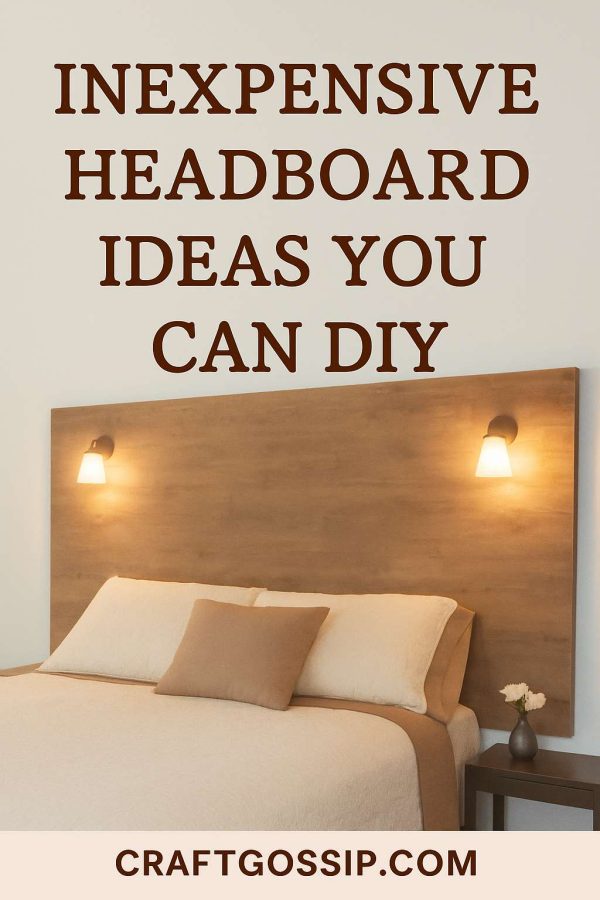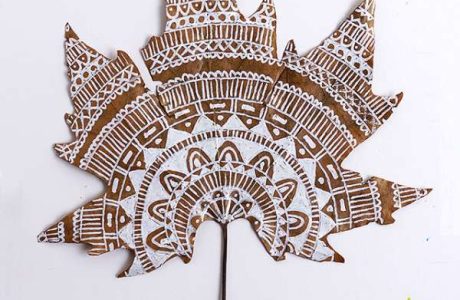
Finding a nice headboard for your bedroom can be no easy task. Especially if you have a certain décor style or theme in mind. If you are willing to do a little work yourself, you can get exactly what you want and save a little along the way. This post (later on) has over 100 ideas of headboards you can DIY that will not break the bank.
A headboard is a great way to add style and personality to a bedroom, and it can be an affordable option compared to buying a new bed frame. With a DIY headboard, you have the freedom to choose the materials, design, and size that suit your personal style and decor. Headboards can be short, tall, chunky, or slim, and there are countless styles to choose from. Whether you prefer a rustic, modern, or traditional look, you will find a tutorial in this roundup to inspire you.
But of course all the ideas can be broadly categorized into:
- Repurpose old doors or shutters: Old doors or shutters can make great headboards. Simply attach them to the wall behind your bed using brackets or screws. You can leave them as is for a rustic look or paint them to match your decor.
- Use fabric or curtains: Another option is to create a fabric or curtain headboard. Simply hang a piece of fabric or a curtain rod behind your bed and drape it over the top. You can use a single piece of fabric or several panels to create a layered look.
- DIY upholstered headboard: To make an upholstered headboard, you’ll need a piece of plywood, foam padding, and fabric. Cut the plywood to the desired size and shape, then attach the foam padding using spray adhesive. Wrap the fabric tightly around the padding and plywood, stapling it in place on the back. Attach the headboard to the wall using brackets or screws.
- Painted headboard: You can also create a headboard by simply painting a design or pattern directly onto the wall behind your bed. This can be a great option if you’re short on space or don’t want to add extra bulk to your room.
In addition to adding style to your bedroom, a DIY headboard can also serve practical purposes. It can help to define the space and create a focal point in the room, and it can also provide a comfortable place to lean against when reading or watching TV in bed.
Precautions when using Headboards
As with other things, you should take some precautions when using them
- Choose materials carefully: When selecting materials for your headboard, make sure that they are sturdy and able to support your weight. Avoid using materials that are too thin or flimsy, as they may not be able to hold up over time.
- Use proper tools: Be sure to use the proper tools for the job and follow all safety guidelines when using them. If you’re not familiar with a particular tool, it’s a good idea to get some guidance or instruction before using it.
- Secure the headboard to the wall: Make sure to securely attach the headboard to the wall using brackets or screws. This will ensure that the headboard doesn’t wobble or fall over, which could be dangerous.
- Check for sharp edges: Before installing the headboard, check for any sharp edges or rough spots that could cause injury. Sand down any rough areas and cover any sharp edges with tape or padding.
- Be mindful of electrical outlets: If your headboard will be placed near electrical outlets, make sure that it doesn’t cover them or create a hazard. You may need to adjust the placement of the headboard or install outlet covers to ensure safety.
Read the post here: 100 Inexpensive and Insanely Smart DIY Headboard Ideas



